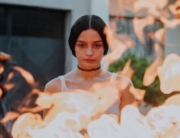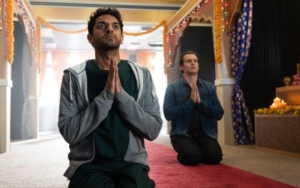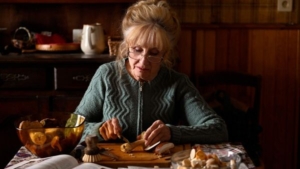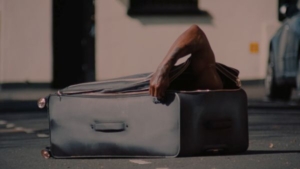In her debut feature, Australian director Noora Niasari threads a fine needle, celebrating her Iranian background while striking out against a particularly entrenched mindset. It’s inspired by the filmmaker’s childhood as well as the life of her mother—stay for the closing credits to learn more.
She highlights the festivities for Nowruz, the Persian New Year, and an Iranian expat community’s partying offers a welcome reprieve to the underlining tension of a mother and daughter on the run from an abuser. (As the mother teaches her daughter the symbols of Nowruz, which takes place on the first day of spring—though it’s autumn Down Under—it’s as much for the viewers’ benefit as it is for the wide-eyed, excited child.) Throughout, Niasari adeptly avoids a broad-stroke op-ed-as-a-movie taking down the patriarchy.
Shortly after Shayda (Zar Amir Ebrahimi), along with her six-year-old daughter, Mona (Selina Zahednia), arrives in 1995 Australia to reunite with her medical student husband, Hossein (Osamah Sami), she is physically and sexually assaulted by him; he demands she provide him a son. She immediately calls the police, and she and her daughter are taken to an incognito women’s shelter in an unnamed city. If Shayda were to return to Iran, she could receive a divorce only if her husband allows it. Now in a country with different laws, she hopes to legally end her marriage, go back to school, and begin a new chapter. When she cuts her long hair for a bobbed look, the makeover is a declaration of independence. Hossein, however, refuses to grant her a divorce and fights for shared custody. In the interim of the legal wrangling, he’s allowed to visit Mona on Saturday afternoons unsupervised.
When Shayda infrequently ventures out to buy spices at a Persian market, she covers her tracks, dreading encountering anyone she knows; the expats are not without their internal gossip mill. The women (the older generation, especially) are as much enforcers of traditional decorum as the men. Additionally, the camera’s classic Academy ratio narrows the onscreen image, further boxing in its constricted protagonist.
However, the director drops her nuanced approach toward Shayda and her heritage in her portrayal of the estranged husband. Hossein reeks of anger and bitterness. It will not only be little Mona but audience members who may lose control of their bodily functions when he appears, and he becomes more physically threatening when he surmises that Shayda may have a new beau. When he’s on-screen, Shayda turns into a monster movie.
Occasionally, the viewers’ inner editor may want to fast forward during several overextended sequences. Niasari can’t resist a dance party or moments that repeat the same information. Yet, you can hardly blame the director and editor Elika Rezaee for focusing on the central mother-and-daughter relationship, which gives considerable heft to the film. Zahednia is disarmingly lucid and entirely involved in the alarming circumstances involving Mona. She gives an exceptional and gripping performance, so convincing that you hope she wasn’t traumatized by playing the role.
Ebrahimi came to international attention last year, winning the Best Actress award at Cannes for the investigative thriller Holy Spider. Here, the screenplay offers her a fuller bodied character. Nearly every scene offers a new side to Shayda. In addition, the director has a secret weapon: a lead actress who allows viewers into the character’s private moments, and here there are many. Ebrahimi joins a formidable group of women who stood out at this year’s Toronto International Film Festival among the non-English language selections: Leonie Benesch in The Teachers’ Lounge, and Sandra Hüller in Anatomy of a Fall and The Zone of Interest.

















Leave A Comment